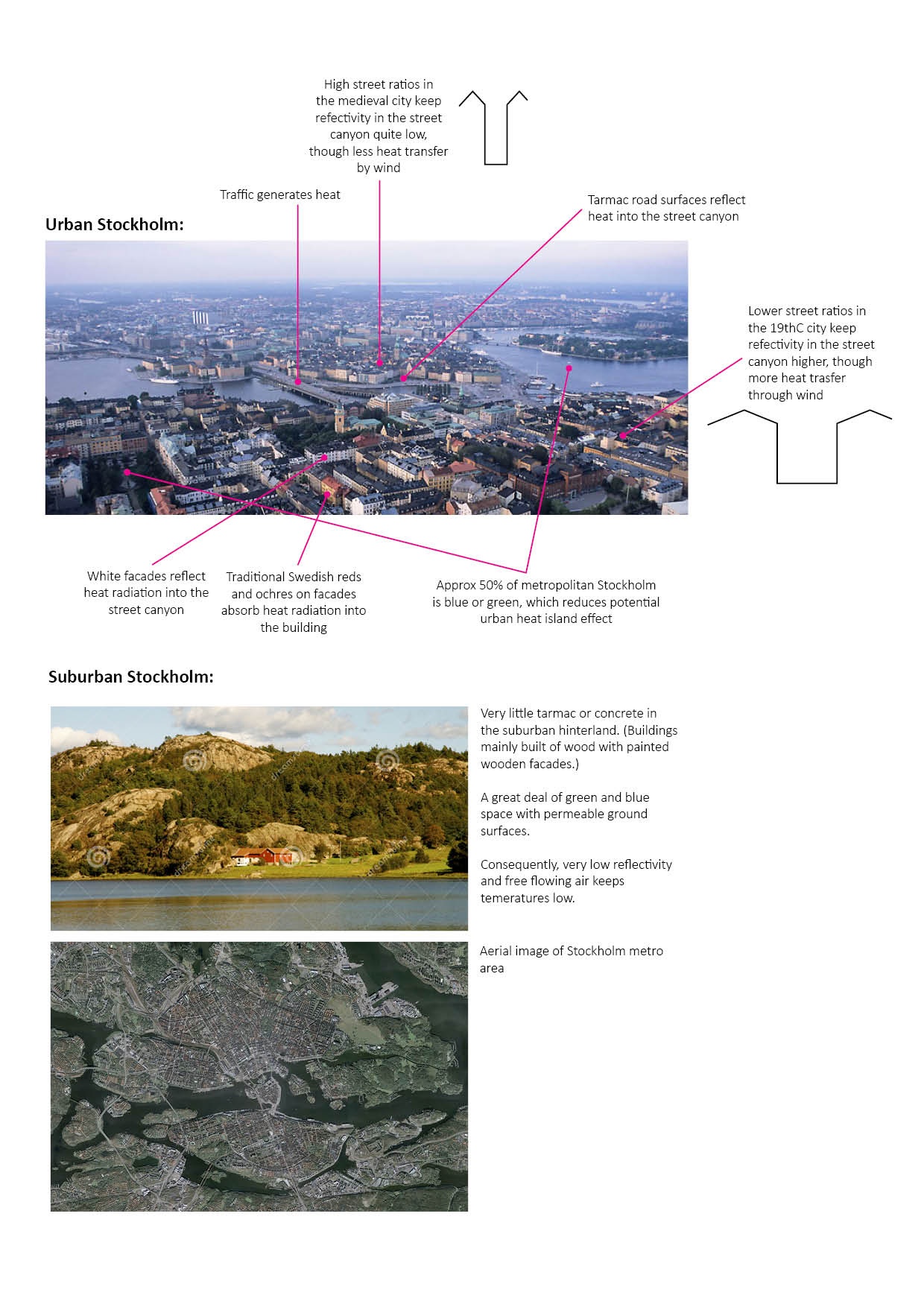Urban Climate 1 - Stockholm / Abu Dhabi
FC-02x Livable Future Cities ( 2nd Run) - Compulsory Exercise 2

Uploaded on 2016-03-18 by alexandercochrane
**Image 1** shows the mean yearly temperature in Sweden over time. Red bars show temperatures above average and blue bars show temperatures below average, based on the period 1961-1990. The black curve shows a 10-year moving average. It shows a clear increase over the time period with upward spikes in the 1930’s and since 1990. The average temperature in Sweden is expected to continue to rise. By the end of the 21st century the annual average temperature is predicted to be 2-6 °C higher than for the period 1961-1990, depending on which scenario is used. ![sweden climate change][1] **Image 2** shows the mean temperature in south and central Sweden during a typical year of recent times (2011). The Stockholm urban area shows a 1 degree increase over its rural hinterland. Stockholm is however a relatively low density city with a great deal of green and blue open space. Around 50% of the surface urban area of metropolitan Stockholm is green or blue. ![Stockholm UHI][2] A comparison with London (a much more ‘urban’ northern European city) shows far more significant evidence of an urban heat island – around 5 degree increase over its rural hinterland. ![London UHI][3] Images of Stockholm which show the different UHI issues in the city and the suburbs: ![Stockholm urban-suburban][4] **Which are the measures you would propose?** Stockholm does not really face a challenge with the urban heat island effect. However I have lived in Abu Dhabi which is a highly urbanized city in a very hot desert climate. In this case I would propose the following: • Regulate street ratios to encourage narrow, shaded street canyons • Encourage permeable surfaces in streets and spaces to reduce reflectivity (grass, sand, water) • Development patterns that maximize heat transfer through wind • Encourage the use of shade canopies and trees to create shade • Consider raising buildings on stilts to encourage wind / heat transfer • Consider traditional building designs that harvest wind to cool buildings and streets **Is UHI effect concerning policy making in your area?** Not a great deal in Stockholm. Policy is aimed at addressing climate change more generally and the wider effects on the whole of Sweden. But in Abu Dhabi, the Estidama planning and construction regulations are having an effect. **Image 3** shows a development in Abu Dhabi before the establishment of the Urban Planning Council. **Image 4** shows a recent development which has been subject to Estidama planning and construction regulations. It displays clear signs of initiatives to increate thermal comfort and reduce the need to energy intensive cooling. ![image 3][5] ![image 4][6] [1]: https://edxuploads.s3.amazonaws.com/1458303914184152.png [2]: https://edxuploads.s3.amazonaws.com/14583040318638262.jpg [3]: https://edxuploads.s3.amazonaws.com/14583040623989637.png [4]: https://edxuploads.s3.amazonaws.com/14583070661988448.jpg [5]: https://edxuploads.s3.amazonaws.com/14583071457278998.jpg [6]: https://edxuploads.s3.amazonaws.com/14583071582318422.jpg